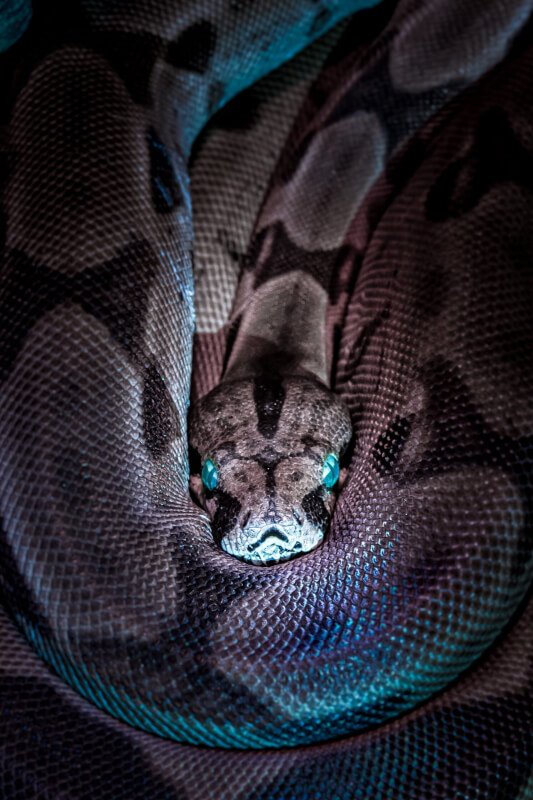So you’re thinking about adding a new reptile to your existing pet family, but you’re not quite sure of the best way to go about it. Well, worry no more! In this article, we will guide you through the steps on how to introduce a new reptile to your current pet in a smooth and stress-free manner. Whether you have a curious cat, a playful dog, or another reptile already at home, we’ve got you covered with helpful tips and tricks to ensure a successful introduction for all parties involved.
Preparation
Before introducing a new reptile to your existing pet, it’s important to take several steps to ensure a smooth transition and prevent any potential conflicts or stress. Here are some essential steps to follow:
Research the Species Compatibility
The first step in introducing a new reptile to your existing pet is to research the species compatibility. Different reptile species have different temperaments and care needs, so it’s crucial to choose a reptile that will be compatible with your current pet. Consider factors such as size, aggression levels, and habitat requirements.
Create Separate Living Spaces
To prevent any potential territorial disputes or aggression, it’s essential to create separate living spaces for your new and existing pet. This will allow them to establish their own territories and prevent unnecessary stress. Each reptile should have their own enclosure with the appropriate temperature, humidity, and size requirements.
Gather Necessary Supplies
Gathering the necessary supplies is crucial before introducing a new reptile to your existing pet. Make sure you have all the essential equipment, such as enclosures, heating and lighting fixtures, thermometers, hygrometers, and substrate. Additionally, stock up on food, water dishes, and any other specific supplies needed for each reptile species.
Gradual Introduction
Once you have prepared the necessary requirements, it’s time to begin the gradual introduction process. This helps the reptiles become familiar with each other’s presence without causing undue stress or aggression. Here’s how you can facilitate a gradual introduction:
Separate but Visible Enclosures
During the initial stages of introducing a new reptile, it’s best to keep them in separate but visible enclosures. This allows them to see and smell each other without direct physical contact. Choose enclosures that allow for visual interaction; glass enclosures or mesh dividers work well for this purpose.
Exchange Scents
To familiarize your reptiles with each other’s scent, you can exchange scents between their enclosures. Rub a cloth or towel on one reptile’s enclosure and place it in the other reptile’s enclosure, and vice versa. This allows them to become accustomed to each other’s scent, reducing the likelihood of aggression during later interactions.
Limited Visual Interaction
After a few days of separate but visible enclosures and scent exchanges, you can start allowing limited visual interaction between the reptiles. This can be done by partially removing the barriers or using transparent dividers that allow them to see each other. Observe their behavior closely during these interactions to ensure there are no signs of stress or aggression.

Supervised Interactions
Once the reptiles have become more accustomed to each other’s presence through gradual introduction, you can proceed to supervised interactions. This step is crucial for assessing their behavior and ensuring their safety. Here’s what you need to do:
Secure Environment
Before introducing the reptiles, ensure the environment is secure to prevent any potential escapes or accidental physical contact. Remove any hazards or objects that could cause harm or stress to the reptiles. Close all windows and doors to prevent unexpected escapes.
Introduce Through Glass
To minimize the risk of physical contact and potential aggression, it’s recommended to initially introduce the reptiles through a glass barrier. This can be done by placing the enclosures side by side or using a separate partition that allows visual interaction but restricts physical contact. This way, they can observe each other without the risk of injury.
Short Sessions with Barriers
During the initial supervised interactions, it’s crucial to keep the sessions short and have barriers in place. This helps prevent any aggressive behavior while allowing them to become gradually more comfortable with each other’s presence. Start with short sessions of 10-15 minutes, and gradually increase the duration over time if there are no signs of stress or aggression.
Gradually Remove Barriers
As the reptiles become more comfortable during supervised interactions, you can gradually start removing the barriers between their enclosures. However, it’s essential to closely monitor their behavior during this process. If any signs of stress or aggression become apparent, reintroduce the barriers and continue with supervised interactions until their behavior stabilizes.
Monitoring Behavior
Throughout the introduction process, it’s crucial to closely monitor the behavior of both reptiles. This allows you to detect any signs of stress, aggression, or potential compatibility issues. Here are some tips for effectively monitoring their behavior:
Observe Body Language
Observe the body language of both reptiles during interactions. Signs of stress or aggression can include puffing up, hissing, biting, lunging, raised tails, or aggressive posturing. On the other hand, relaxed body language, calm movements, and a lack of defensive or aggressive behaviors indicate that they are more comfortable with each other’s presence.
Look for Signs of Stress or Aggression
Pay attention to any signs of stress or aggression during or after interactions. If one or both reptiles consistently display signs of stress or aggression, it may be a red flag indicating that they are not compatible. In such cases, you may need to reconsider the introduction or consult with a reptile veterinarian or expert for further guidance.
Consult with a Veterinarian or Expert
If you notice any concerning behavior during the introduction process, it’s essential to consult with a reptile veterinarian or expert. They can provide valuable insights and guidance based on their experience and expertise. Don’t hesitate to seek professional advice to ensure the well-being and safety of both reptiles.

Establishing a Routine
To promote a harmonious environment between your new and existing reptile, it’s important to establish a routine that includes consistent feeding schedules, separate feeding areas, structured playtime, and individual attention. Here’s how you can establish a routine:
Consistent Feeding Schedule
Establishing a consistent feeding schedule is crucial for both reptiles. Feed them at the same time each day to prevent any potential conflicts over food. Make sure to provide an appropriate diet for each reptile species, considering their nutritional requirements.
Separate Feeding Areas
To avoid territorial disputes during feeding time, it’s best to provide separate feeding areas for each reptile. This ensures that they can consume their meals without feeling threatened by the presence of the other reptile. Place their food bowls or feeding platforms in different areas of their enclosures.
Structured Playtime
Offering structured playtime is essential for the mental and physical well-being of both reptiles. Allow them to explore and exercise separately in a controlled environment, ensuring they have individual play sessions to avoid any potential conflicts. Provide reptile-safe toys and enrichment activities to keep them engaged and stimulated.
Provide Individual Attention
Just like humans, reptiles also require individual attention and bonding time. Spend quality time with each reptile, providing them with separate attention and interaction. This helps to strengthen the bond between you and your pets while avoiding any potential competition for your attention.
Handling
Handling your reptiles properly is essential for their well-being and promoting positive interactions between them. Here are some key considerations when handling your reptiles:
Use Gentle and Secure Techniques
When handling your reptiles, always use gentle and secure techniques to ensure their safety and minimize stress. Approach them calmly, using a gentle touch and providing support for their body to avoid any potential falls or injuries. Avoid sudden movements or loud noises that could startle them.
Supervise the Interaction
Whether you’re handling one reptile at a time or introducing them to each other during supervised interactions, it’s crucial to closely supervise the interaction. Keep a watchful eye on their body language and behavior, intervening if any signs of stress, aggression, or discomfort arise.
Allow for Individual Comfort Zones
Respect the individual comfort zones of each reptile during handling. Some reptiles may be more comfortable being handled for longer periods, while others may prefer shorter interactions. Pay attention to their body language and behavior to determine their comfort level, always prioritizing their well-being and reducing stress.

Addressing Aggression
If you observe signs of aggression between your new and existing reptile, it’s important to address the issue promptly to prevent any harm or long-term stress. Here’s what you can do:
Separation and Timeouts
If aggressive behavior occurs during interactions, it’s crucial to separate the reptiles immediately and provide timeouts in separate enclosures. This allows them to cool down and regroup, reducing the risk of escalating aggression. Monitor their behavior closely during this time and reintroduce them gradually once they have calmed down.
Reevaluate Compatibility
If aggression continues to persist despite efforts to address the issue, it may be necessary to reevaluate the compatibility between your reptiles. Some reptiles simply may not be compatible due to their individual temperaments or territorial nature. In such cases, it may be necessary to keep them permanently separated to ensure their safety and well-being.
Seek Professional Advice
If you’re unsure how to address aggression between your reptiles or if the situation seems to be escalating, it’s essential to seek professional advice. Consult with a reptile behaviorist or veterinarian who specializes in reptiles. They can provide guidance specific to your situation and offer recommendations on how to manage and resolve aggression.
Maintain Hygiene
Maintaining proper hygiene is essential when introducing a new reptile to your existing pet. This helps prevent the spread of diseases and ensures the overall health of both reptiles. Here are some important hygiene practices to follow:
Clean the Enclosures Regularly
Regularly clean and disinfect the enclosures of both reptiles to maintain a clean and healthy living environment. Remove any waste, uneaten food, and debris on a daily basis. Follow the appropriate cleaning protocols for each reptile species and make sure to use reptile-safe disinfectants.
Prevent Cross-Contamination
To prevent the spread of potential pathogens or parasites, it’s crucial to prevent cross-contamination between the enclosures of your new and existing reptile. Use separate cleaning tools, such as brushes and sponges, and avoid reusing any equipment or materials without proper cleaning and disinfection.
Handle with Proper Sanitation Measures
When handling your reptiles, it’s important to practice proper sanitation measures. Wash your hands thoroughly before and after handling each reptile to prevent the transfer of any potential germs or pathogens. Additionally, use gloves when necessary, especially if your reptile shows signs of illness or if you have any open wounds or sores.

Seek Professional Guidance
Introducing a new reptile to your existing pet can be challenging, especially if you encounter difficulties or conflicts during the process. To ensure the best outcome for both reptiles, don’t hesitate to seek professional guidance. Here are some options:
Consult a Reptile Behaviorist
If you face persistent behavior issues or are unsure how to proceed, consider consulting a reptile behaviorist. These professionals specialize in reptile behavior and can provide in-depth insights, training techniques, and advice tailored to your specific situation.
Visit a Herpetologist
A herpetologist, who studies reptiles, can provide valuable expertise and guidance in introducing a new reptile to your existing pet. They can provide insights into the behavior and needs of the specific reptile species involved, as well as suggestions for managing any potential conflicts.
Join Online Reptile Communities
Online reptile communities, such as forums and social media groups, can be a valuable source of information and support. Connect with experienced reptile owners and enthusiasts who have gone through similar experiences. They can offer practical advice, share personal experiences, and provide emotional support throughout the introduction process.
Avoid Common Mistakes
When introducing a new reptile to your existing pet, it’s important to avoid common mistakes that could compromise the process or the well-being of your pets. Here are some key mistakes to avoid:
Rushing the Process
One of the most common mistakes is rushing the introduction process. It’s crucial to take the time needed for gradual introduction and closely monitor the behavior and compatibility of the reptiles. Rushing the process can lead to stress, aggression, and potential harm to your pets.
Ignoring Warning Signs
Ignoring warning signs of stress, aggression, or incompatibility can have serious consequences. It’s essential to closely observe the body language and behavior of both reptiles, addressing any concerning signs promptly. Ignoring these warning signs can result in dangerous situations and compromise the well-being of your pets.
Skipping Quarantine Period
Skipping the quarantine period for the new reptile is a common mistake that can have detrimental effects. Quarantine allows you to observe and ensure the health of the new reptile before introducing it to your existing pet. Skipping this period increases the risk of spreading diseases and parasites to your current pet.
By following these comprehensive steps, you can ensure a smooth and successful introduction of a new reptile to your existing pet. Remember to prioritize the well-being and safety of both reptiles throughout the process, and don’t hesitate to seek professional guidance if needed. With patience and proper care, you can foster a harmonious environment where both reptiles can thrive.



